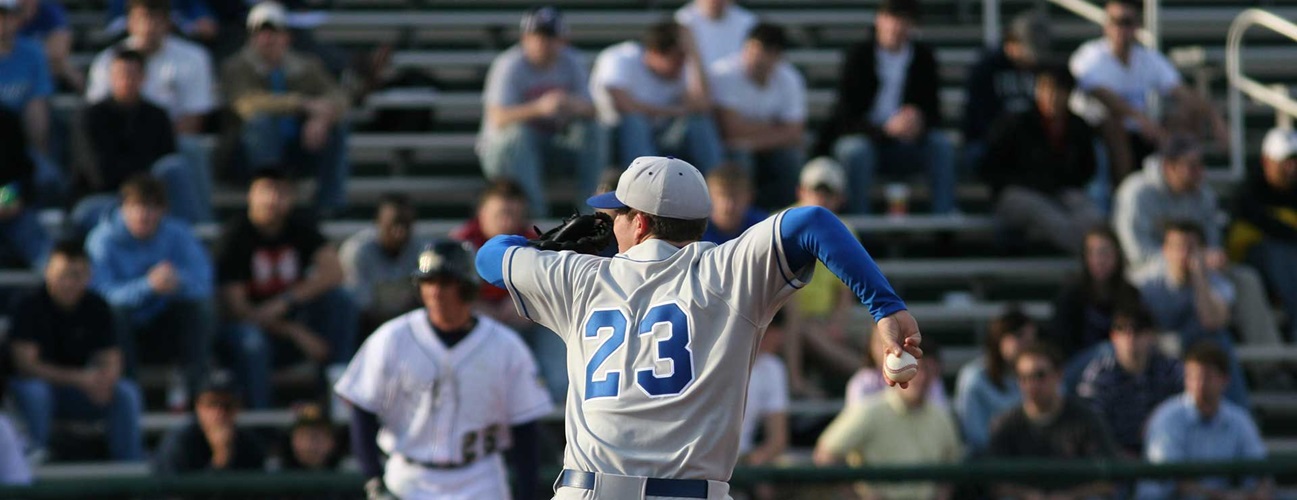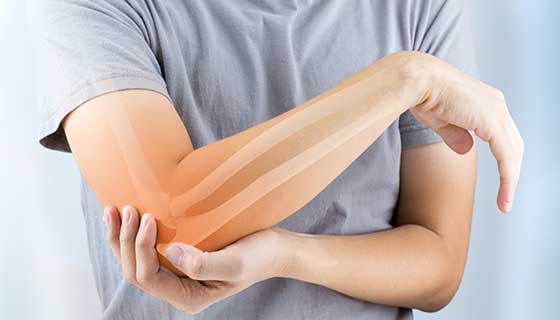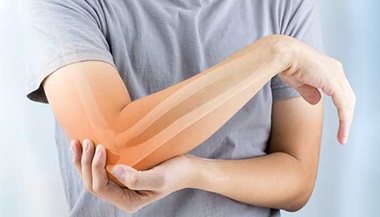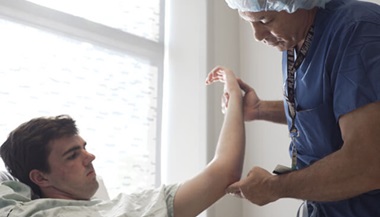Tommy John Surgery (Ulnar Collateral Ligament Reconstruction)
What You Need to Know
- Tommy John Surgery, more formally known as ulnar collateral ligament (UCL) reconstruction, is used to repair a torn ulnar collateral ligament inside the elbow.
- A UCL is a ligament on the inner side of your elbow that helps secure your elbow joint.
- Some people, typically athletes who play throwing sports, may experience UCL tears that may need surgical repair.
- A UCL reconstruction surgery involves harvesting a tendon from your own body, or from a donor, and attaching it to act as a new UCL.
- It may take overhead athletes more than a year or longer to return to their prior level of play after a UCL reconstruction.
- Tommy John didn’t invent this procedure—he was a baseball pitcher who was the first to undergo it and successfully return to his sport.
What is Tommy John Surgery?
UCL reconstruction is a surgery commonly used to repair a torn ulnar collateral ligament inside the elbow by replacing it with a tendon from elsewhere in the body. The goal of the surgery is to stabilize the elbow, reduce or eliminate pain and restore stability and range of motion. This procedure was introduced and first performed by Frank Jobe, M.D., on baseball pitcher Tommy John in 1974—hence the colloquial name Tommy John surgery.
Elbow Surgery | Michael's Story
College athlete Michael Perry was a young and healthy offensive lineman until he was knocked over on his elbow after practice. He immediately knew something was wrong. Johns Hopkins elbow specialists diagnosed Michael and discovered how serious his injury was.
How Tommy John Surgery Works
Tommy John Surgery is typically an outpatient procedure. This means you can usually return home the same day. It is performed under general anesthesia and may last anywhere from 60 to 90 minutes.
Harvesting the Graft
The tendon used to replace the torn UCL is called a graft. It can be harvested from various parts of your body or from a donor. A graft is typically taken from one of the following tendons:
-
Palmaris longus tendon from the forearm
-
Hamstring tendon
-
Big toe extensor tendon
Cleaning Out the Joint
To access the elbow joint, a three- to four-inch incision is made on the outside of your elbow. Once muscles and other tissues are moved out of the way, your surgeon can assess the damage. Any damaged tissues are removed. Sometimes the surgeon will attach the remnants of the original ligament to the graft, reinforcing the structure.
Securing the Graft Inside the Elbow
To attach the new tendon, holes are drilled in the two bones originally connected by the UCL: the upper arm bone (humerus) and the lower arm bone (ulna). Next, the graft tendon is threaded through these holes and secured by sutures, buttons or screws.
There are several techniques of threading the tendon through the bones. The most common ones are the docking technique and the figure-eight technique. New, less invasive techniques are also being developed by researchers.
Who could benefit from Tommy John Surgery?
Tommy Johns Surgery is typically used for UCL tears that happened due to overuse, rather than a single traumatic event. Such overuse injuries are common in baseball pitchers and other athletes who experience a lot of bending in the elbow. Tommy John surgery may be recommended if your lifestyle or job demand a lot of stress on the elbow or if nonsurgical treatments don’t relieve your pain.
Risks and Complications of Tommy John Surgery
Like most surgeries, the UCL reconstruction comes with the risk of infection and issues related to anesthesia. Complications after this procedure may include nerve or blood vessel damage. This damage may lead to temporary or permanent numbness or weakness.
Stretching or even a rupture of the graft is also possible. In these cases, a new graft may be used to perform a second reconstruction. Potential complications may also arise from the graft harvesting site, but they are also rare and can usually be resolved with medication.
In addition, the ulnar nerve may be irritated as a result of the elbow injury. The UCL is located on the inner side of the elbow, which is also where the ulnar nerve passes around the elbow joint. It may need to be moved in front of the elbow joint to help prevent further irritation.
Rehabilitation After Tommy John Surgery
The rehabilitation protocol after a Tommy John surgery typically involves three phases. The length of each phase will vary from patient to patient, depending on how fast the tissues are healing.
-
Right after the surgery, the elbow is secured in a brace at a 60- to 90-degree angle. The goal is to protect the healing tissue and reduce inflammation. You can start physical therapy right away, focusing on your wrist, fingers, shoulder and biceps to help avoid muscle atrophy.
-
One or two weeks after the surgery, you can start moving your elbow joint. Your doctor may put you in a hinged brace that can be locked at a certain angle when you are not exercising. You can also wear an arm sling for comfort. Physical therapy at this stage focuses on gradually increasing your range of motion in the elbow.
-
By the end of the first month, you may be able to fully extend your elbow and eventually stop wearing the brace. With regular physical therapy, most patients regain their normal range of motion in the elbow in two to four months after the surgery.
If you are an athlete, you may need a longer rehabilitation before you can return to your sport. In most instances, a throwing athlete can gradually return to competitive throwing between six and nine months following a Tommy John Surgery. It’s important to continue an aggressive strengthening and stretching program during and after return to your sport. It routinely takes nine months to one year (or longer) for an athlete to return to competition.






